Degenerative arthrosis of the joints, which develops with the destruction of cartilage tissue, is often diagnosed at a young age in men and women. The characteristic symptoms of an early disease are severe pain that occurs at rest when there is no load on the limb. A complex treatment is prescribed to reduce the discomfort and prevent the destruction of cartilage structures.
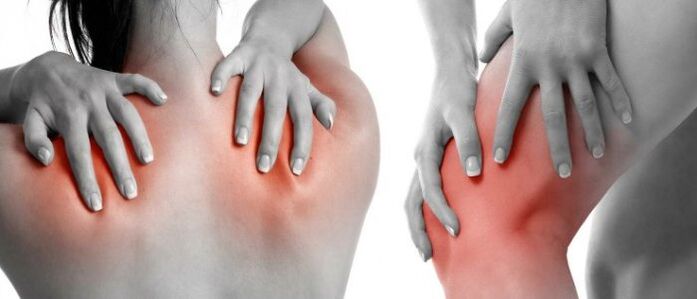
What is this disease?
Osteoarthritis is a terrible, common chronic disease that affects the majority of the entire population.
The pathology is characterized by inflammatory lesions of the cartilage tissues of small and large joints. Degenerative changes in cartilage affect the periarticular capsule, synovial membrane, muscle and ligaments, and bone tissue. The root cause of the development of such a pathology is considered to be a disturbed metabolism. It is not possible to completely cure the disease, it will only be possible to bring the patient into remission, so osteoarthritis, which gradually destroys the articular system, is dangerous. Joint disease is often diagnosed in old age, but also in young people in their 20s. It is important to diagnose the early stages of development. This will prevent new complications and help the body cope with the problem.
Reasons for development

Disruption of metabolic processes in the joints leads to the onset of the disease. Pathology is characteristic of one or more joints at the same time. Other common causes of osteoarthritis:
- hormonal changes in women during menopause;
- disruption of blood supply to the joints;
- persistent hypothermia;
- chronic damage;
- old age;
- excess weight;
- increased stress on the joints;
- autoimmune pathologies;
- thyroid disease;
- hemophilia;
- herpes;
- hepatitis;
- allergies affecting bone and joint structures;
- varicose veins;
- strict diets or unbalanced meals;
- excessive physical activity;
- heredity;
- unfavorable environment.
Arthritic changes are observed in people who have to work in difficult physical conditions. These are the following specific specialties:
- miners;
- bricklayers;
- metallurgists;
- blacksmiths;
- fishermen.
Stages and characteristic symptoms
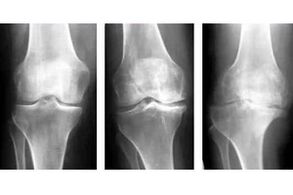
The symptoms of osteoarthritis develop gradually and increase as the pathology progresses. There are 3 stages of osteoarthritis:
- In the first stage, no morphological changes are observed, only the synovial composition of the fluid is disrupted, resulting in less nutrition of cartilage tissue, rapid loss of elasticity and endurance. There is inflammation in the joint space, the pain begins to bother.
- In stage II, the degenerative process develops more actively. The cartilage of the joints is gradually destroyed, uric acid is not completely eliminated from the body, resulting in the first bone growth in the joint. This restricts the movement of the joint, so inflammation develops, causing constant pain in the pelvic floor muscles.
- Grade III manifests itself as complete thinning of the cartilage tissue of the joint, and deformation of the joint is also observed. There are signs of extreme changes. In addition, degenerative disorders of the garden apparatus begin, as a result of which the limb can no longer move normally, hypermobility is observed, accompanied by a violation of the natural range of motion. In the 3rd stage of osteoarthritis, the pain is constant, the person can not sleep quietly, can not sleep, can not rest. Incomplete nutrition of the joint threatens to disrupt the functioning of the affected joint.
Other symptoms
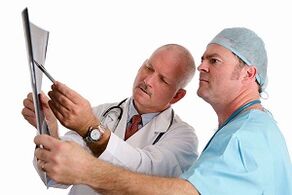
The disease causes a person's symptoms, which are conventionally divided into 4 groups:
- Pain. Severe pain in the joints, which does not last long, is the first symptom that characterizes the development of pathology. Pain is caused by any movement or physical activity, but when you relax, the person recovers, the anxiety recedes.
- Crunch. This symptom is expressed in the acute phase of osteoarthritis. Due to the long-term deformation of the cartilage tissue of the joints, the bone structures begin to touch and rub against each other. As the crisis grows, so will the pain syndrome.
- Joint mobility is impaired. Progressive bone osteoarthritis causes an increase in bone formation. As a result, muscle tissue spasms and the gap in the joint gradually shrinks. The pressure in the joint increases, which causes the joint to become immobile.
- Joint deformation. The rapid growth of osteophytes can lead to modification of the joint, but this symptom already develops in later stages.
Types of arthrosis of the joints
Separate the secondary with idiopathic or primary osteoarthritis. The first type is an independent disease caused by physiological, age-related changes. However, the secondary form occurs against the background of chronic injuries and can manifest itself at any age - in the 20s or 30s. Osteoarthritis differs depending on which joint is affected:
- shoulder or elbow joint;
- hip or knee joint;
- waist.
There is also a disease:
- elegant;
- unspecified, unknown.
Why is it dangerous?
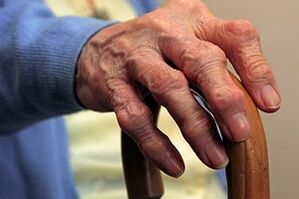
Acute osteoarthritis is terrible, because as the pathology progresses, the spine becomes involved in degenerative processes, resulting in hernias. Therefore, effective treatment of osteoarthritis in the early stages of development is important when conservative methods can be applied. If the drug is given prematurely or the patient tries to recover on his own, the following diseases begin to appear:
- deformation and destruction of articular elements;
- restriction of mobility of limbs;
- disability;
- violation of the biomechanics of the spine due to disc shrinkage.
Diagnostics
It is important to know the exact diagnosis before prescribing an effective treatment for osteoarthritis or removing the affected areas. Therefore, after the initial examination, the patient is sent to undergo:
- general clinical analysis of blood and urine;
- perforation of synovial fluid, if synovitis of the knee joint is suspected;
- an example for histological examination of the biopath.
Instrumental diagnostics is performed - radiography. If a patient has gonarthrosis (especially expressed by varicose veins), an X-ray of the knee joint should be performed. This area of the musculoskeletal system is examined with dysplasia and arthrosis of the hip joint. An ultrasound, MRI, or CT scan is recommended to determine the type of damage to the cartilaginous structures.
How to treat?
Medical and surgical
Early osteoarthritis is treated with conservative therapy. Medications are selected by the doctor according to an individual scheme. If a person has a stomach ulcer or other pathology of the organs of the gastrointestinal tract, then oral administration is contraindicated. In this case, the needles will give the desired effect. Proper prescription of drugs will help increase the activity of metabolic processes in the affected areas. Effective drug groups that will prolong remission:
- Anti-inflammatory;
- Hormonal corticosteroids;
- Chondroprotectors.
If conservative methods do not work, surgery is prescribed. Palliative surgery is indicated to remove the joint. When a joint is completely destroyed, surgery is performed to replace it, called arthroplasty. As new technologies advance in the field of prosthetics, people with altered joints can live a different but complete life.
Sports therapy, physiotherapy, massage
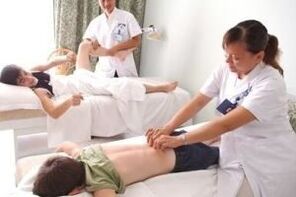
Kinesitherapy is the name of a type of therapy developed by a famous doctor. These are a number of physical exercises that need to be performed in special simulators. Regular exercise will help to normalize the condition of the joint and improve its functionality. This means that training is recommended in specialized hospitals specializing in diseases of the musculoskeletal system.
Massage procedures performed by a therapist will help to normalize the blood supply and nutrition to the affected areas, resulting in a gradual improvement in the condition of the joints. If the causes of osteoarthritis are clearly identified and there are no contraindications, a course of physiotherapeutic procedures is prescribed, for example, the following:
- electrophoresis;
- magnetotherapy;
- laser treatment;
- mud treatment;
- medical applications based on natural resins.
Need a diet
If osteoarthritis is triggered by obesity, the patient is advised to follow a diet that will help normalize body weight, which will significantly reduce the load on the joints and improve their work. To speed up the healing of cartilage tissue, doctors recommend that patients eat bone-in mixtures and broths more often. Thanks to the collagen in these containers, connective tissues will begin to recover and regenerate faster. It is also important to follow the balance and completeness of the diet. Foods should be varied, rich in vitamins, micro and macronutrients.
Prophylaxis
To avoid the development of such a dangerous and serious disease, it is important to dose the load on the joints, especially the joints of the lower extremities. It is also worth avoiding injuries and fractures, after which the risk of osteoarthritis increases tenfold. It is important to lead an active lifestyle, exercise regularly in the morning, eat right and control your weight. Thanks to these rules, it will be possible to protect yourself from the development of destructive pathology or relapse.























